Taming Nepean Dog-Strangling Vine: Summer Control Tips
Ah, Ottawa summers! Sunshine, BBQs on the deck, maybe swatting a *few* extra mosquitoes this year... and then there's *that* vine. If you're gardening in Nepean, you probably know the one we mean: Dog-Strangling Vine (DSV). It sounds dramatic, and frankly, its takeover of local yards *is* pretty dramatic! This invasive bully muscles its way into our gardens and green spaces, smothering the plants we actually like and turning careful landscaping plans into a tangled frustration. It’s like that annoying party guest who just won't leave, except this one *also* strangles your favourite peonies. And it's not just staying put; we're seeing it creep into nearby spots like Barrhaven too. Don't let DSV hijack your summer gardening joy!
Struggling with DSV? Get a personalized plan and reclaim your yard. Request a Quote Today!
Quick Guide to Summer DSV Control:
- Identify Correctly: Look for opposite, oval, glossy leaves, twining stems, and small, dark purple/maroon star-shaped flowers (June-Aug).
- Dig Deep: Remove the entire root crown for best results on small patches.
- Cut Repeatedly: Cut vines to the ground every 2-3 weeks if digging isn't possible.
- Stop Seed Spread: Remove and bag bean-like seed pods *before* they open (late summer) – crucial step! Dispose in garbage.
- Smother Regrowth: Use cardboard/fabric and thick mulch on cleared areas.
- Dispose Properly: Solarize in black bags, then discard in garbage (check City rules). Never compost!
Meet the Neighbourhood Nuisance: Identifying Dog-Strangling Vine in Summer
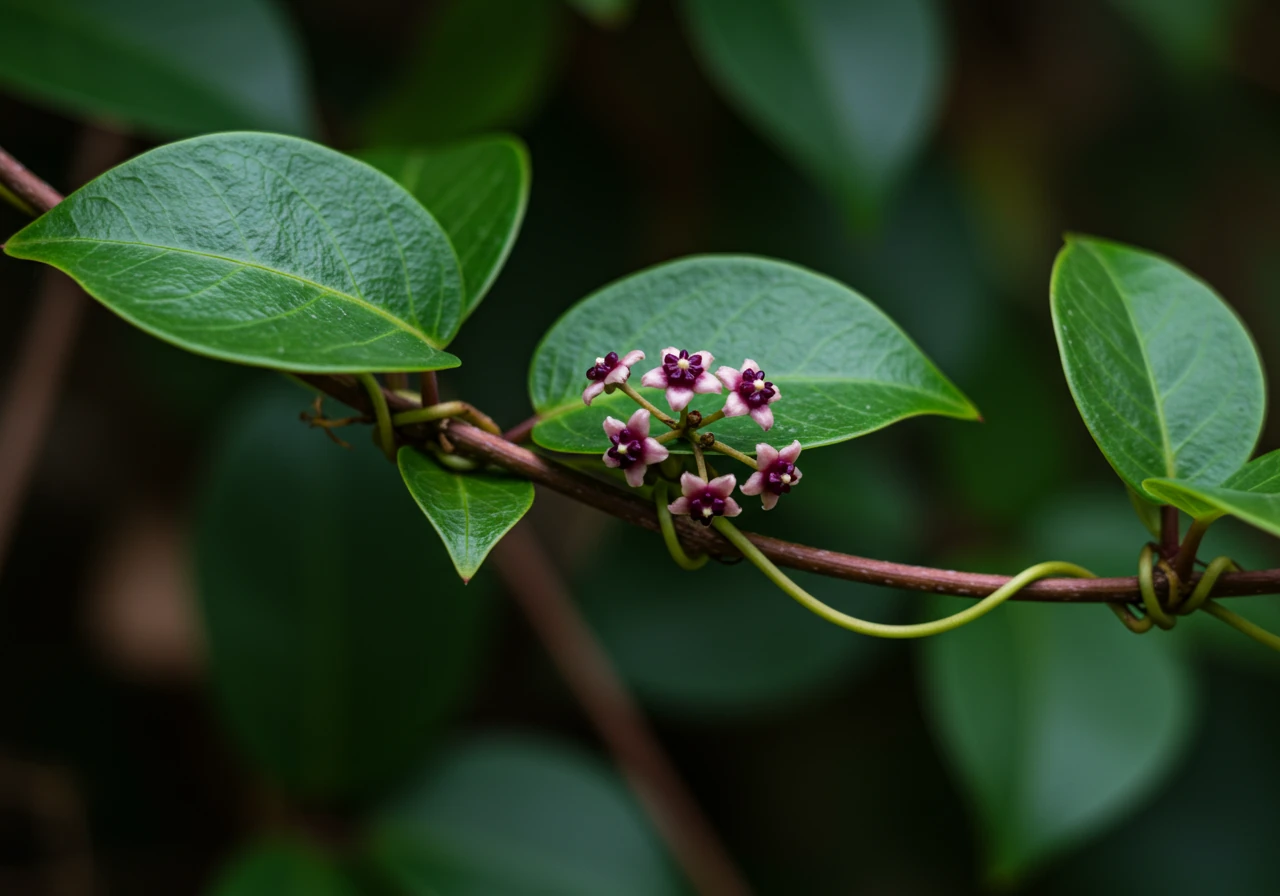
Alright neighbours, let's talk about that uninvited guest crashing everyone's garden party this summer: Dog-Strangling Vine (DSV). It sounds like a villain from a cartoon, but this invasive plant is a real headache for gardeners across Ottawa, especially popping up along fences and forgotten corners in areas like Greely and Osgoode. Spotting it early, particularly in summer, is your best defence! So, let's put on our detective hats and learn how to identify this pesky vine. For more resources on identifying invasive species in our region, check out the Ontario Invasive Plant Council (OIPC) profile on DSV or the City of Ottawa's invasive species page.
Think of DSV as the ultimate copycat, trying to blend in. But it has some tell-tale signs once you know what to look for:
- The Leaves: Look for pairs of oval-shaped leaves directly opposite each other on the stem. They have a pointed tip, smooth edges (no teeth!), and often look a bit glossy, like they've had a shine treatment. They are typically 7-12 cm long.
- The Stems: This is a vine, after all! Its stems are *not* woody; they are green and twisty, wrapping themselves around *everything* – your prized shrubs, fences, lawn furniture, you name it. They climb aggressively, sometimes reaching impressive heights.
- The Flowers (The Summer Giveaway!): From June to August, DSV shows its true colours. Look for small, star-shaped flowers (about 5-7 mm across) with five petals. They grow in little clusters and are usually a distinct dark purple or maroon colour, though sometimes they can be pinkish. They aren't showy, but they are a key ID feature.
- The Seed Pods (Uh-oh!): Later in the summer, you'll see the real problem brewing. DSV produces slender, bean-like pods, often 4-7 cm long. They look *a bit* like milkweed pods. Inside, they're packed with seeds attached to fluffy white parachutes, ready to float away and start new invasions. Seeing these means it's crucial to act fast!
Don't Be Fooled!
DSV is often confused with native milkweeds. But native milkweed doesn't twine and climb aggressively like DSV. Also, Common Milkweed has broader, duller leaves and much larger, showier pinkish-purple flower clusters. Swamp Milkweed has narrower leaves than DSV and pink flowers. Remember: If it's *twining* tightly around other plants with those opposite, glossy leaves and small dark flowers, it's likely DSV.
Identifying DSV in the summer is vital because that's when it flowers and sets seed, allowing it to spread rapidly. Spotting it now lets you intervene before those pods burst. Understanding your local conditions, much like the advice in the Osgoode Microclimate Plant Care Spring Guide, helps you notice when something unwelcome, like DSV, moves in. Tackling it is a key part of maintaining a healthy garden, just like developing a good Winchester Spring Garden Health Plan. Keep notes on where you find it; this info is gold, similar to keeping a Manotick Fall Garden Log for Spring Savings. Removing DSV effectively is crucial, because like the Greely Fall Garden Tips to Prevent Plant Loss suggest, dealing with problems proactively saves headaches later.
If the invasion feels overwhelming, remember that help is available. Sometimes calling in the cavalry via Professional Yard Clean Up Services is the best way to tackle a stubborn patch of DSV. Pictures definitely help with identification, so snap a few photos if you're unsure!
Why DSV is More Than Just an Eyesore: The Ottawa Impact
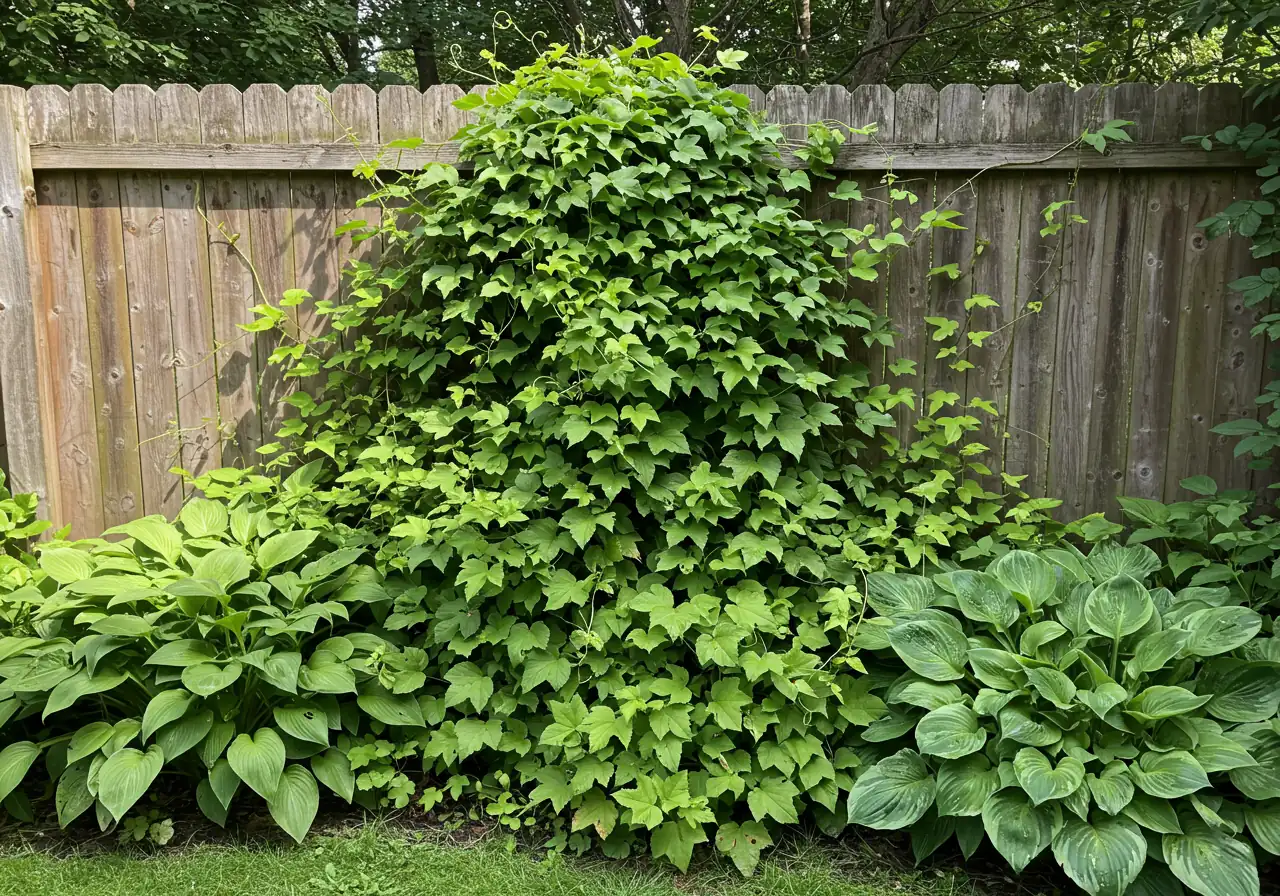
Okay, let's be honest, Dog-Strangling Vine (DSV) isn't winning any beauty contests. That tangled mess climbing your fence or smothering your hedge definitely ruins the view. But the trouble with DSV in Ottawa goes much deeper than just looking bad. This vine is less of a garden pest and more of an ecological party crasher, and its impact is felt across our city and surrounding areas, potentially impacting conservation efforts like those by the Rideau Valley Conservation Authority (RVCA).
First off, DSV is a bully to our native plants. It grows aggressively, forming dense patches that crowd out the local wildflowers and grasses that *should* be there. This means less food and habitat for the bees, birds, and other critters that depend on native ecosystems. It throws the whole *biodiversity* balance out of whack. One of the saddest parts? It tricks Monarch butterflies. Monarchs mistake DSV for milkweed (their actual food source) and lay their eggs on it. Tragically, the caterpillars can't eat the DSV leaves and don't survive. So, this vine is directly harming populations of an already beloved and struggling species right here in Ottawa.
In your own backyard *gardening* efforts, DSV is a nightmare. It wraps tightly around your prized perennials, shrubs, and even small trees, literally strangling the life out of them and destroying your careful *landscaping* work. It competes fiercely for sunlight, water, and nutrients, weakening the plants you actually want. And DSV doesn't care about property lines! Seeds easily spread by wind, meaning an infestation in one yard can quickly become a problem for the whole neighbourhood, and even escape into nearby natural areas or the edges of communities like Richmond or Metcalfe. Ottawa’s mix of clay or disturbed urban soils, combined with our warm, humid summers, unfortunately gives DSV a good environment to thrive once established.
Dealing with it requires persistence. It’s not just a one-time weed pull; effective removal often calls for a dedicated approach, maybe even professional help like a City Garden Clean Up Service. For larger, more established infestations, exploring broader Professional Yard Clean Up Services might be the best bet. Tackling DSV is really an ongoing commitment, becoming part of your essential City Garden Maintenance Service to prevent it from returning. If you're facing a tough battle, especially in communities outside the immediate core like those needing a Kenmore Yard Cleanup Service, remember help is available. Don't let DSV take over – feel free to Contact Us for advice or assistance! Find out more about our approach on our About Us page or check out our listing on Google.
Summer Smackdown: Effective DSV Control Techniques
Alright team, summer's here, and while we love the heat, so does Dog-Strangling Vine! But don't throw in the trowel just yet. Fighting this garden thug takes strategy and persistence, especially during its peak growing season. Think of it as a summer-long wrestling match – you just need the right moves! Here are some effective techniques to smack down DSV in your Ottawa yard:
1. Digging Deep: Getting to the Root of the Problem
This is often the most effective method, *if* you do it right. It's tough work, especially in Ottawa's infamous heavy clay soil which can feel like digging through concrete sometimes!
- The Goal: Remove the entire root system, paying special attention to the root crown. This is the tough, woody bit right at the soil surface where the stems sprout from the roots. Leaving even a small piece means the vine will come back.
- How-To:
- Wait for a day or two after rain, or water the area well beforehand.
- Use a sharp spade or sturdy garden fork. Start digging several inches away from the base.
- Work around the plant, loosening soil. Gently lift the entire root system.
- Carefully sift soil for stray root fragments. Get that root crown!
- Good For: Smaller patches or newly sprouted vines. Labour-intensive but offers the best chance of complete removal. If tackling a bigger area, integrating this with a professional Ottawa Garden Clean Up Service or Metcalf Garden Clean Up Service can save your back.
2. Cut and Come Again: The War of Attrition
Can't dig it out? Maybe it's tangled in your favourite rose bush or climbing a fence. Repeated cutting is your next best bet.
- The Goal: Starve the plant by constantly removing leafy growth, preventing photosynthesis and weakening roots over time.
- How-To:
- Cut vines right down to ground level using shears or clippers.
- Be persistent! Repeat every 2-3 weeks or when regrowth appears, especially *before* flowering (June-August) and seeding.
- Good For: Areas where digging isn't feasible, large infestations (as part of a combined approach), or as temporary control. Requires patience and is often part of ongoing Garden Maintenance or a City Garden Maintenance Service plan.
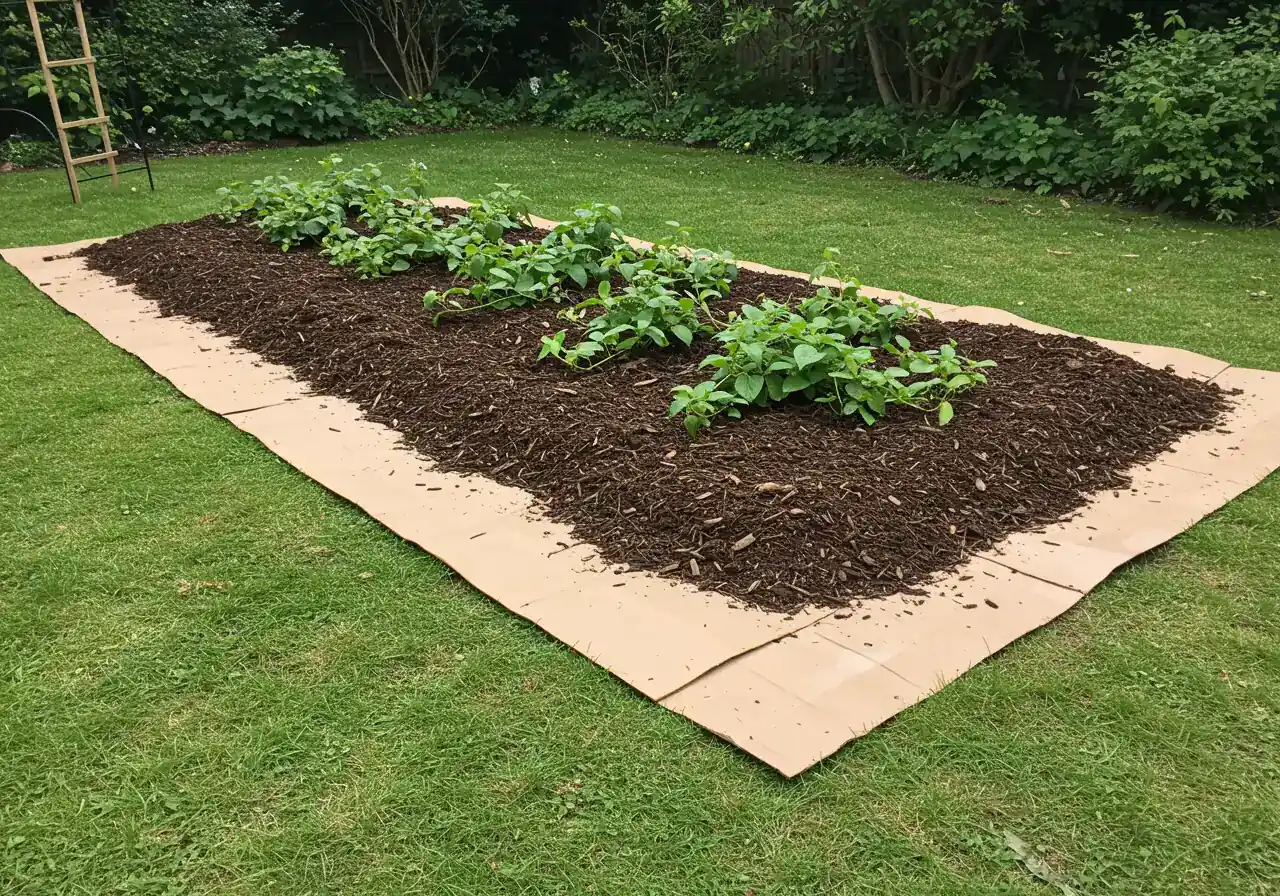
3. Seed Pod Patrol: Stop the Spread! (Crucial Subsection!)
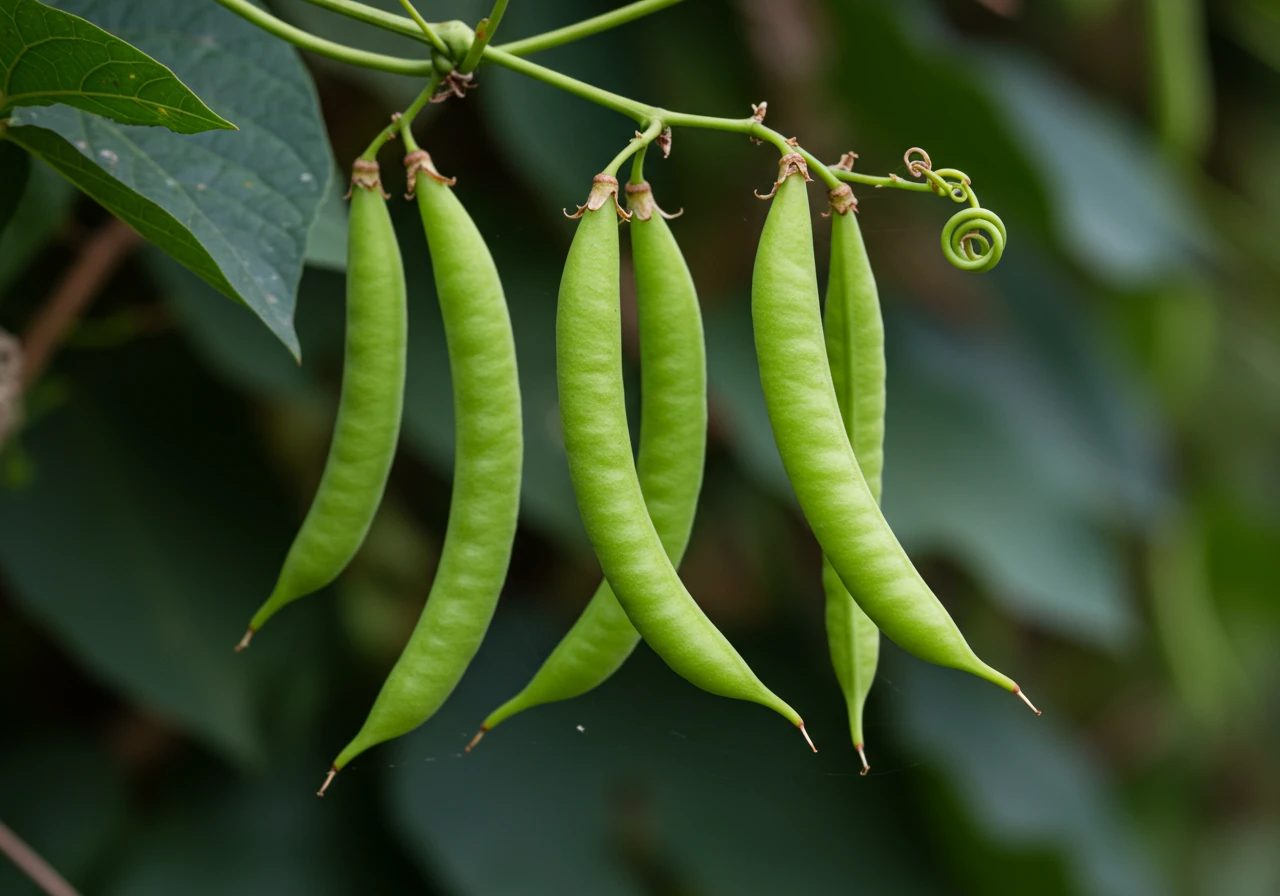
This step is vital for preventing future generations of DSV! Those sneaky pods are little dispersal bombs waiting to multiply.
- The Goal: Remove and destroy seed pods before they mature, split open, and release their fluffy, wind-blown seeds (usually late summer/early fall).
- How-To:
- Carefully scan plants for the slender, bean-like pods (4-7 cm long).
- Clip the pods directly into a garbage bag. Do not just drop them.
- Seal the bag tightly and dispose of it in your regular garbage. Do not put DSV pods or roots in your compost bin! Check City of Ottawa guidelines.
- Good For: Absolutely everyone dealing with DSV! This prevents spread within your yard and to neighbours in communities like Manotick or further afield like Marionville. Even if you're getting professional help like a City Yard Cleanup Service, keep an eye out for pods yourself between visits.
4. Smother Tactics: Suppressive Mulching
Block the light, block the growth!
- The Goal: Deprive the DSV (or fragments left after digging/cutting) of sunlight.
- How-To:
- Cut vines to the ground.
- Cover the area thoroughly with overlapping layers of cardboard or several sheets of newspaper (soy-based ink preferred). Heavy-duty landscape fabric can also work (pin securely).
- Top the light-blocking layer with a thick layer (at least 4-6 inches) of dense mulch, like wood chips. This ties into good Mulching and Edging practices.
- Good For: Areas cleared by digging or cutting to prevent regrowth. Needs to be left in place for *at least* one full growing season, possibly longer. Can be part of a new Garden Install plan after clearing an infestation. For stubborn areas, professional support, like that offered by a Marionville Yard Cleanup Service, might explore commercial-grade barriers.
| Method | Effort Level | Effectiveness (Long-term) | Best For |
|---|---|---|---|
| Digging Deep | High | Very High (if root crown removed) | Small patches, new growth |
| Repeated Cutting | Medium (Consistent) | Medium (Weakens over time) | Large areas, inaccessible spots |
| Pod Patrol | Low (Vigilant) | High (Prevents spread) | ALL infestations |
| Smothering/Mulching | Medium (Setup) | High (If maintained) | Cleared areas, preventing regrowth |
Honestly, the best approach often involves combining these techniques. Digging followed by mulching, or persistent cutting combined with vigilant seed pod removal. No matter what, consistency is key! Don't let that vine win the summer smackdown!
The Aftermath: Eco-Friendly Disposal in Ottawa
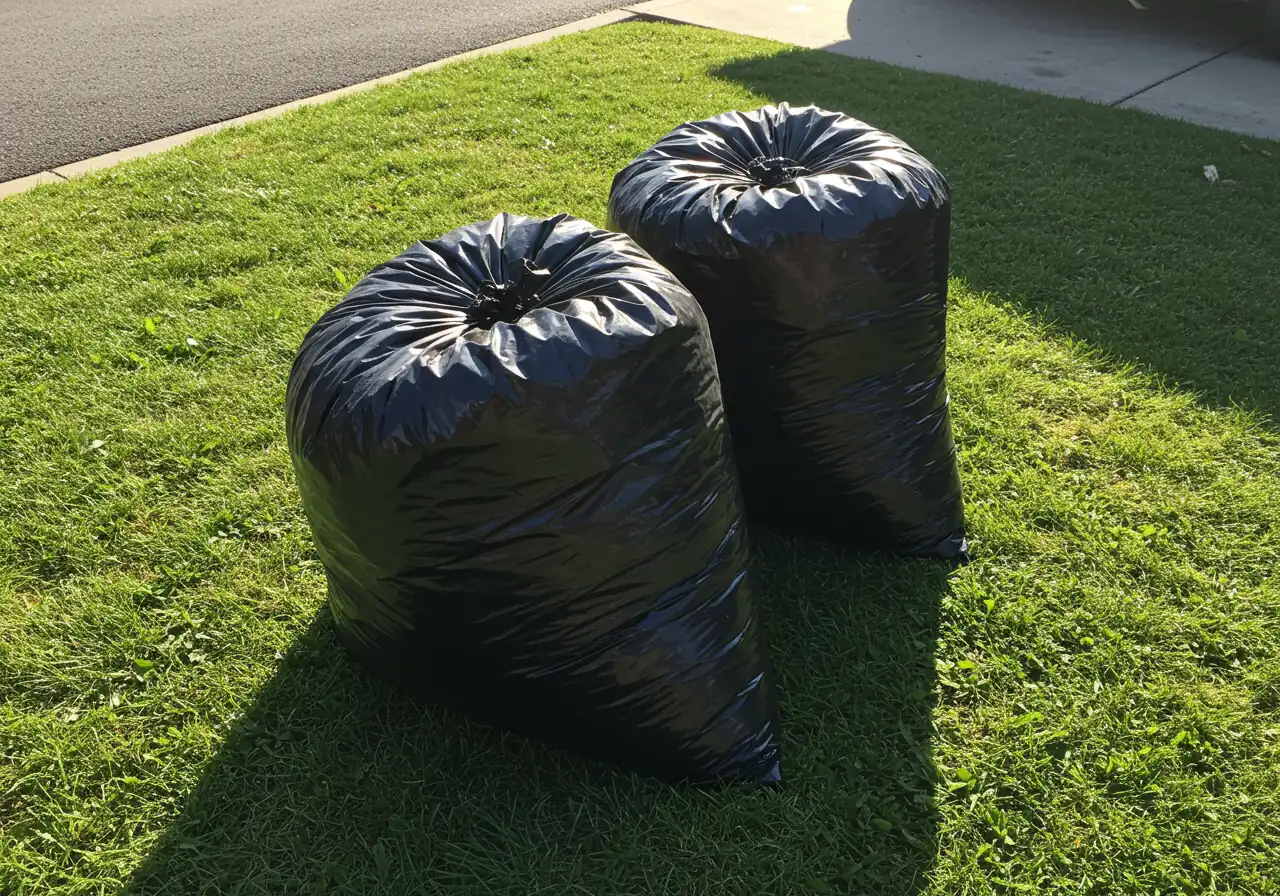
Hooray! You've battled the beast and ripped out that pesky Dog-Strangling Vine. Give yourself a pat on the back (and maybe grab a cold drink). But wait – don't just chuck those vines onto the compost heap! Getting rid of the removed DSV *correctly* is the crucial final step to preventing its dreaded return. Tossing it carelessly is like leaving the back door open for it to sneak right back in.
First things first: Absolutely, positively DO NOT put DSV roots, stems, or seed pods in your home compost bin. Seriously, we can't stress this enough. Unlike the grass clippings you get from applying Proper Lawn Care Techniques, DSV is incredibly resilient. Its roots can regrow from small fragments, and its seeds are tough survivors. Your backyard compost likely won't get hot enough to neutralize them, meaning you could accidentally re-infest your garden later. That would be a *major* gardening bummer!
So, what's the eco-friendly game plan? Your best bet is solarization. Here’s how it works:
- Stuff all the DSV plant material – roots, vines, leaves, and especially those seed pods – into heavy-duty black plastic garbage bags. Don't skimp on the bag quality!
- Seal the bags up TIGHTLY. Like, super airtight. You want to trap heat and moisture inside.
- Leave these sealed bags in a sunny spot for at least several weeks during the summer. The sun's heat will bake the contents, effectively "cooking" and killing the plant material, roots, and seeds. Think of it as a tiny, portable sauna of doom for the DSV.
Once everything is thoroughly cooked (it should look black and decomposed), you need to dispose of the bag. Crucially, always check the City of Ottawa's most current waste disposal guidelines for invasive species. Don't assume it can go in the Green Bin just because it's plant matter. Invasive species often require disposal as garbage (in your black bin) to prevent spread through municipal composting facilities. Use the City's Waste Explorer tool or call 3-1-1 to confirm. We believe in handling things responsibly, right down to protecting information – you can see our commitment outlined in our Privacy Policy and our operational guidelines in the Terms and Conditions.
Remember, proper disposal protects more than just your own *landscaping*. It prevents seeds from spreading to your neighbours in communities like Kars, or escaping into Ottawa's precious natural areas. If you've tackled a monster patch and the sheer volume of DSV feels overwhelming, professional help like a Metcalf Property Cleanup Service or a Marionville Property Cleanup Service can handle the removal and ensure correct disposal. Taking this final disposal step seriously is like saying a big Thank You! to your future, less weedy self.
Playing the Long Game: Preventing Re-infestation & Restoring Your Yard
Okay, you wrestled that Dog-Strangling Vine into submission – nice work! Feels good, right? But before you hang up your gardening gloves, let's talk about keeping that leafy bully gone *for good*. Winning the battle is one thing; winning the war requires playing the long game. Preventing DSV from staging a comeback is all about persistence, smart landscaping, and maybe a little neighbourly teamwork.
First rule: stay vigilant! DSV is sneaky and can regrow from tiny root bits or pop up from seeds blown in from down the street. Make it a habit to patrol your yard regularly, especially in spring and early summer when new growth spurts. Spotting a tiny sprout early is *way* easier than dealing with another tangled mess later. Think of it as a quick garden walkabout – grab your coffee and keep those eyes peeled!
Next, strengthen your yard's defenses. Healthy, thriving plants are less likely to be pushed around. Keep your existing garden beds happy with good soil preparation, appropriate watering, and maybe a nice layer of *mulch*. Mulch not only looks tidy but also helps smother potential DSV seedlings. Consider planting densely, especially along borders where DSV might try to creep in. Speaking of borders, while seeds travel by wind, crisp edging can sometimes help visually define areas and make spotting invaders easier during your patrols. Proper thoughtful material selection for mulch and edging contributes to both defence and aesthetics.
Now, let’s fill those empty spots where the DSV used to be! Instead of leaving bare ground, restore the area with beautiful, hardy plants that belong here. Choosing *Ottawa-native* species is fantastic because they're suited to our climate and support local pollinators and *biodiversity*. Think cheerful Black-Eyed Susans, vital Butterfly Milkweed (the *real* stuff Monarchs need!), fragrant Wild Bergamot, or even native shrubs like Serviceberry. These plants will look great and help create a resilient ecosystem in your yard. If the initial DSV removal left a bigger mess than anticipated, requiring more significant restoration, considering a comprehensive property clean up might be a good starting point for a fresh slate. Planning this kind of preventative *landscaping* often involves getting quotes, and if you've worked with pros before, they appreciate it when you share your estimate feedback to help them refine their services.
Don't forget your neighbours! DSV doesn't respect property lines, especially in connected areas like Barrhaven. Have a friendly chat over the fence – sharing tips and tackling infestations together makes everyone's *gardening* life easier. For really widespread or stubborn issues, sometimes professional help is the least stressful route, whether it's nearby or requires a specialized team like a Marionville property cleanup service or a general City property cleanup service. Seeing successful transformations can be inspiring!
Seasonal DSV Management Timeline:
Spring (April-May)
Vigilant patrol for early sprouts. Dig out new plants focusing on root crowns. Prepare garden beds with good soil preparation.
Early Summer (June-July)
Peak growth. Identify flowers. Start persistent cutting (every 2-3 weeks) or continue digging. Monitor borders.
Late Summer (August-September)
**CRUCIAL: Pod Patrol!** Actively search for and remove seed pods before they mature. Bag and solarize/dispose in garbage.
Fall (October-November)
Final clean-up of dead vines (dispose properly). Apply thick mulch (Mulching and Edging) over cleared areas to suppress spring growth. Plan spring plantings.
Winter
Rest, but plan for spring vigilance. Review notes from previous season (like a Manotick Fall Garden Log). Research native plants for restoration.
Looking ahead, scientists *are* working on biological controls (like a special moth that munches only DSV!), but that's still mostly in the research phase. For now, our best tools are vigilance and consistent action. Stick with it, and you'll be saying a big Thank You! to yourself next year when your yard is thriving, not strangling!
Key Summer Strategies: DSV Control Cheat Sheet
Alright, Ottawa gardeners, feeling a bit overwhelmed by that Dog-Strangling Vine? Don't sweat it! Here’s your quick summer cheat sheet to keep that vine villain in check, whether you're in Barrhaven or dealing with it out near Metcalfe. Remember these key moves:
- Dig Deep & Get the Crown: If you dig, focus on removing the entire root crown. Leave a piece, and it will be back! This is tough work, but very effective for smaller patches.
- Cut Relentlessly: Can't dig? Cut the vines right to the ground every 2-3 weeks, before they flower or set seed. Starve those roots! This consistent effort is key.
- Pod Patrol is NON-Negotiable! Seriously, this is huge. Snip off those bean-like seed pods before they open (late summer). Bag 'em securely and put them in the garbage (check City rules!), not compost. Preventing spread is crucial.
- Smother & Deprive: After cutting or digging, cover the area with cardboard or landscape fabric, topped with a thick layer of mulch. Good material selection helps block sunlight and suppress regrowth.
- Dispose Responsibly: Never compost DSV. Bag it (black plastic bags), solarize it in the sun for weeks, then put it in the garbage as per City of Ottawa guidelines. This prevents accidental spreading.
- Call for Backup When Needed: If the infestation is large or overwhelming, don't despair. Professional help, like a dedicated Ottawa yard cleanup service or specialized teams like the Metcalf yard cleanup service for those further out, can tackle the heavy lifting. Even a general city property cleanup service might offer invasive species removal. Seeing the results of professional removal can inspire your own garden transformations. Consider services in other areas like Ottawa property cleanup service too.
Stay vigilant, be persistent, and reclaim your yard this summer!
DSV Control Effort vs. Effectiveness (Conceptual)
Note: Chart is illustrative. Effectiveness depends on consistency and site conditions.
Your Ottawa DSV Questions Answered (FAQ)
Ah, the quick fix dream! Unfortunately, Ontario has rules about using cosmetic pesticides, which limits most common herbicide use on lawns and gardens. While there might be some specific products allowed for poison ivy or certain invasive plants *if* applied by a licensed exterminator, you can't just grab any spray off the shelf for DSV in your Manotick garden beds. Plus, DSV's extensive root system often laughs off surface sprays. Manual removal or professional help, like a dedicated Metcalf yard cleanup service for tough jobs, are usually your best, regulation-friendly options.
Good news! DSV doesn't typically leave behind toxic substances like some plants (looking at you, Black Walnut!). However, it's a greedy feeder and can really deplete the soil nutrients where it grew, leaving the ground tired and weak. After removing the vine (and all those stubborn roots!), focus on rejuvenating the area. Investing in some thorough soil preparation by adding compost or good quality topsoil will give your desired plants a much better fighting chance and improve your overall garden health.
Victory! Don't let that bare earth invite more weeds. If it was a lawn area, consider replacing it with healthy sod for a quick recovery. In garden beds, think about planting densely with hardy perennials, especially native Ottawa species that support local pollinators. Things like Coneflowers, Bee Balm, or native grasses are great choices. They're tough, beautiful, and help create a stronger defence against future DSV invasions. Just make sure the DSV roots are truly gone first!
Oh, the joys of neighbourly vines! Since those fluffy seeds travel easily, communication is key. Have a friendly chat – maybe they don't even realize what it is or how invasive it is. Offer to share info (like this article!). On your side, be extra vigilant about pulling any sprouts that pop up. Creating a clear, mulched edge along the fenceline might help you spot invaders early, kind of like a little buffer zone in your landscaping.
We wish we could say "one weekend," but DSV is annoyingly persistent! For a small, new patch, diligent digging might solve it in one season. For established infestations, especially in tricky spots, it's often a multi-year effort. Consistent cutting, digging when possible, and never letting it go to seed are crucial. Think marathon, not sprint! Techniques like consistent mulching and edging can also help suppress regrowth over the long term as part of your ongoing garden maintenance. Patience, neighbour!
Reclaim Your Yard: Winning the Summer Battle Against DSV
So there you have it, Ottawa gardeners! Dog-Strangling Vine might seem like a relentless summer foe, crashing your backyard *landscaping* plans, but armed with the right know-how and a bit of persistence, you absolutely *can* win this battle. Remember, summer is the crucial time for *control* – digging deep for that root crown, cutting relentlessly before it seeds, and being hyper-vigilant about those pesky pods are your keys to success. It takes consistent effort, no doubt, but reclaiming your yard from this *invasive species* is definitely achievable. Don't let DSV hijack your summer!
Feeling empowered to tackle it yourself? Go for it! Put these strategies into action, patrol your yard regularly, and maybe share this article with a neighbour wrestling with the same vine – community vigilance helps everyone. But hey, if the infestation feels more like a jungle takeover and you'd rather sip lemonade than wrestle roots, especially in areas like Winchester, Russell, or Embrun, professional help is just a call away. Reach out to us for expert advice and effective removal services to restore your little piece of paradise. Happy *gardening*!

